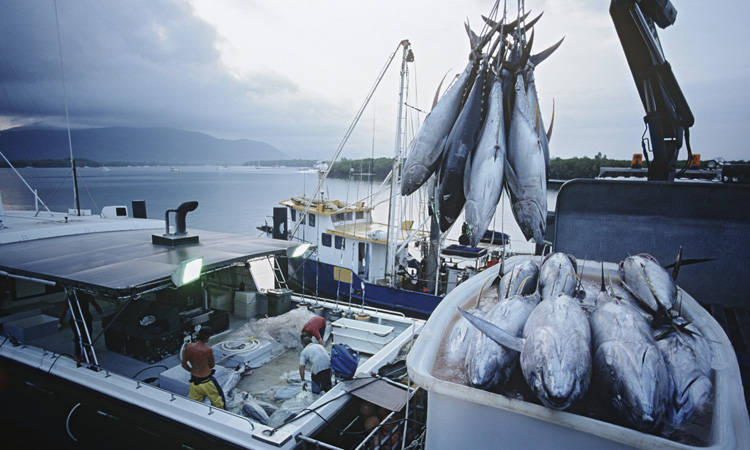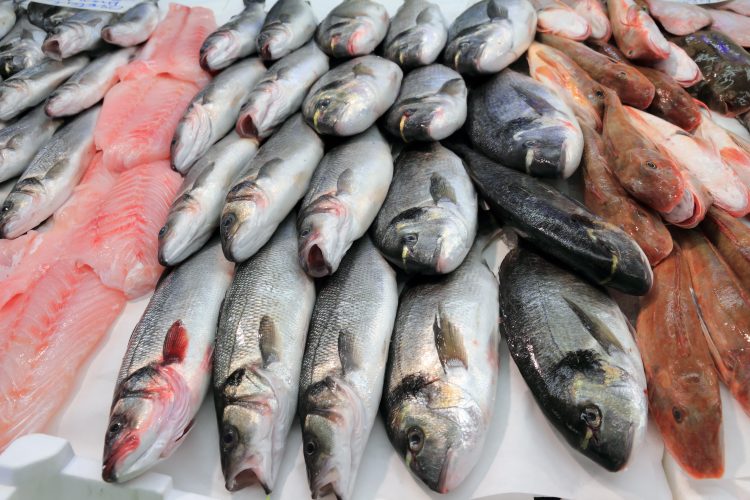The truth behind seafood sustainability?
- Like
- Digg
- Del
- Tumblr
- VKontakte
- Buffer
- Love This
- Odnoklassniki
- Meneame
- Blogger
- Amazon
- Yahoo Mail
- Gmail
- AOL
- Newsvine
- HackerNews
- Evernote
- MySpace
- Mail.ru
- Viadeo
- Line
- Comments
- Yummly
- SMS
- Viber
- Telegram
- Subscribe
- Skype
- Facebook Messenger
- Kakao
- LiveJournal
- Yammer
- Edgar
- Fintel
- Mix
- Instapaper
- Copy Link
Posted: 31 January 2020 | Max Mossler | No comments yet
The seafood industry is often scrutinised for depleting fish stocks and harming the oceans, but is this all confirmed in fact? Max Mossler from the University of Washington’s Sustainable Fisheries Project explains how consumers may well be ill-informed.


People care about the impact of their diet. According to Nielson1, consumers are more likely than ever to acknowledge the environmental impact of global food production and make choices to reduce their individual footprint – usually willing to pay more for lower-impact foods. So why is seafood not flying off the shelves? It is, by far, the lowest impact animal protein2 and, according to a recent global analysis3, fish populations around the world are healthy in places that manage their fisheries well.
The problem is that people’s perception of ocean conservation and subsequent seafood sustainability is often misinformed. For example, when people are asked4 to rank ocean threats, pollution (like plastic) and overfishing are consistently listed as the top two despite expert consensus that climate change is the most pressing threat. The seafood industry has a largely negative5 reputation among everyday consumers and are increasingly blamed6 for plastic pollution.
Why does the negative perception of seafood persist?
Overfishing throughout the 1980s and 1990s earned the seafood industry its infamous label. High-profile media stories about overfishing coupled with the formation of several international ocean advocacy groups vilified the industry – a reputation the industry cannot seem to shake, despite important policy reforms and strong data that many global fisheries are firmly on a path to sustainability.
There are two persistent issues affecting public perception of the seafood industry. The first being that negative press benefits both conservation NGOs needing to raise money and media outlets dependent on clicks, and second, journalists are not fishery scientists. Fishery science and data is complicated to interpret and difficult to communicate.
The problem is that people’s perception of ocean conservation and subsequent seafood sustainability is often misinformed
The fishing industry is not perfect and some of the negative stories are warranted, particularly in regard to working conditions and purposeful overfishing7, but many of the negative stories have dubious origins. For example, Oceana’s seafood fraud campaign8 gets a tonne of press and leads to headlines like ‘At Least One-Quarter Of The Fish You Buy Is A Lie,’ but the science behind their campaign is highly flawed.
Peer-reviewed science has discredited their approach9 to seafood fraud, but journalists usually do not have the resources or capacity to look beyond Oceana’s press releases. Oceana does good work, they have worked alongside the fishing industry to drive important policy reforms10, but there is no denying their suspect communications. Press releases from universities touting new research papers can also be questionable. By their nature, press releases are meant to garner attention for the university – not necessarily communicate the science well. Sometimes they cherry-pick interesting statistics that make a good headline, but do not tell the entire story.
An unrealistic trendline from a paper in 2006 was highlighted in a press release and created the myth11 that, by the year 2048, there would be no more fish in the ocean. It is important to acknowledge that journalists and media are not the enemy, but they are also not scientists – sometimes the science gets lost in the storytelling.


What the industry can do
The first step for the seafood industry should be to commit to doing good. It is harder to write negative stories about an industry that treats its workers well and fishes lawfully and sustainably. Getting the entire global industry together is unlikely, but regional and country-wide reforms and policies are important.
Communicating fishery sustainability is more complex, but a reliable way to assess if a wild-caught fish is sustainable is to focus on the region it’s from
The second step should be to embrace fishery science, management, and transparency and communicate it to customers. If a fishery is biologically sustainable, it should sell itself as the one of the most environmentally friendly foods in the entire grocery store. The average seafood product uses less land and freshwater than anything else on the shelves and has a lower carbon footprint than all other animal proteins. Farmed muscles are probably the best food to eat for the planet, regardless of plant, animals or macronutrient.12
Communicating fishery sustainability is more complex, but a reliable way to assess if a wild-caught fish is sustainable is to focus on the region it’s from. A recent landmark paper13 showed that, for fisheries in which there was data, most were sustainable. This is important to note because this is where regionality is relevant. Countries and regions that intensely manage their fisheries have healthy and improving stocks. Data-deficient areas like parts of Africa and much of Asia probably have a lot of overfishing. Media stories can focus on overfishing in lower capacity countries, but consumers should know that regions with effective fishery management have trustworthy and sustainable seafood.
Seafood companies should partner with fishery managers and NGOs like Oceana to improve regional fishery management and communicate the science, policy and sustainability to consumers more effectively. People are willing to pay more for it, so the investment in sustainability will not only benefit the planet, but also the bottom line.
References
1. https://www.nielsen.com/us/en/insights/…
2. https://sustainablefisheries-uw.org/seafood-101/cost-of-food/
3. https://sustainablefisheries-uw.org/fish-populations-are-improving/
4. http://lotzelab.biology.dal.ca/wp-content/u…
5. https://www.pnas.org/content/111/42/15042
6. https://www.theguardian.com/environment/…
7. https://www.theguardian.com/environment/…
8. https://sustainablefisheries-uw.org/seafood-fraud-oceana/
9. https://sustainablefisheries-uw.org/mislabeled-seafood/
10. https://sustainablefisheries-uw.org/new-…
11. https://sustainablefisheries-uw.org/fisheries-2048/
12. https://sustainablefisheries-uw.org/eating-plants-and-seafood/
13. https://sustainablefisheries-uw.org/fish-populations-are-improving/
About the author
Max Mossler is the Managing Editor of Sustainable Fisheries UW, an outreach project at the University of Washington to communicate the science, policy and human dimensions of fishing.
Related topics
Environment, Food Security, Regulation & Legislation, Research & development, Supply chain, Sustainability









